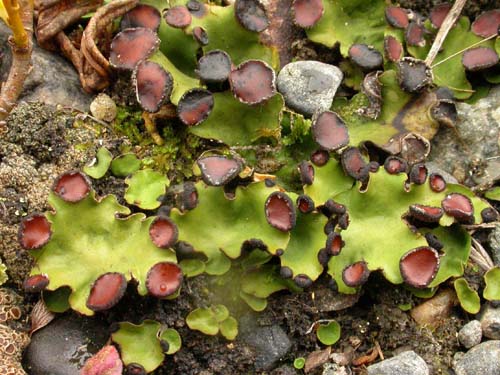Peltigera venosa
Pixie Gowns Lichen
 |
.jpg) |
| P. venosa upper surface. © E. Timdal. | Underside with veins and cephalodia. © E. Timdal. |
The green morphotype should be easily recognised by the small, neat lobes, bright green when fresh and wet. Peltigera britannica and P. leucophlebia are also green when fresh and wet, but they are much larger, with lobes 20-40 mm wide, and with the cephalodia occurring on the upper surface, where they are easily visible. Peltigera didactyla often has small thalli, but the upper surface is grey to grey-brown, the photobiont is Nostoc, the underside has pale veins and rhizines are present.
The blue-green morphotype is similar to very reduced forms of Leptogium species, including L. imbricatum and L. gelatinosum.
VC 49, 23/56: no locality or recorder, pre-1960.
VC 49, 23/65: Ogwen Valley, in base-rich flushes, 1840, John Ralfs (BM); det. O. Vitikainen.
VC 49, 23/65, Twll Du, July 1883, J.E. Griffith (NMW 27.76.131).
VC 49, 23/63.58: Glyder fawr, Twll Du, 1895, recorder unknown.
VC 49, 23/65: Llyn Llydaw, 1981, Tony Fletcher; blue-green morphotype, det. P.W. James.
- Read more about Peltigera venosa
- Log in to post comments
